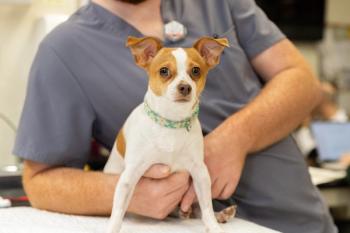
Angry cat presents a sticky problem
The cat's name was Whoops, and it fit the rascal perfectly. He arrived in a pet carrier and would hiss and slap at the cage door if anyone even looked in his direction.
The cat's name was Whoops, and it fit the rascal perfectly. He arrived in a pet carrier and would hiss and slap at the cage door if anyone even looked in his direction.
Most veterinarians will agree that there is almost nothing as dangerous as an angry cat. They have four feet, a mouthful of sharp teeth, and they are lightning fast.
Mother of Whoops kindly said that she would leave him in the cage and we could get him out when it was time for his surgery.
Whoops was about to undergo a declaw procedure. That's what happens when you are a house cat and decide that the arm of the leather couch is a good place to sharpen your claws.
Whoops had taken to this hobby about a month ago. Now that the old couch was ruined, Mother of Whoops had ordered a new one. The claws had to go before it arrived. I don't particularly like this surgery. It seems a bit drastic to me, but I guess it's better than putting the cat to sleep.
Let me give you a quick rundown of how we do it: We anesthetize the cat and then remove the claw from the end of each toe. We do it in just the right place to keep it from growing back, but without affecting the animal's motility. After the claw is removed, we close the space with tissue adhesive (fancy word for super glue) and wrap the paw with an antibiotic bandage. The cat usually is back running around the house in a couple of days.
The surgery on Whoops went perfectly, and we put him back in the carrier before he woke up to prevent another wrestling match. I check on recovering surgical patients quite often, and in about an hour he was hissing at me when I looked in on him.
You know a cat is a bit on the mean side when he lies on his side on the carrier floor one hour after surgery and hisses at everyone who walks by.
Mother of Whoops came at the scheduled time to pick him up. I told her he did well and was waking in the peaceful environment of his carrier. She smiled as I carried Whoops to the car and seemed content that her new couch was safe.
About 9 that night the phone rang. It was Mother of Whoops, who sounded a bit worried.
It seems Whoops would not leave the cage.
She opened the carrier door and placed it in his room, assuming that, when he felt like it, he would come out. It had been several hours but he stayed there, just as he was when she picked him up.
This alarmed me a bit, too. I couldn't imagine why he would not be awake and alert enough by now to walk. I asked her to meet me at the clinic and we would have a look.
She handed me the cage and sat in the waiting room.
I went into the exam room and opened the cage door. There he was, hissing and still in the same position as I left him hours ago.
What could be wrong?
I had never heard of a cat being paralyzed in declaw surgery. Everything had gone well. ...
Then it dawned on me.
The tissue adhesive I'd used to close the surgical sites had exploded a bit when I opened it.
As I examined the hissing critter, it was apparent that some of it had gotten on the cat and in the carrier.
Whoops was glued to the carrier floor.
I gently reached under him and cut the hair that was holding him down. It must have been a larger explosion than I realized because he was stuck tight in several places.
He was up and moving — a happy cat — in no time.
I returned him to the owner and blushingly described what had happened. She was understanding and just glad that things turned out well.
All I could say about my miscue was ... Whoops!
Dr. Brock owns the Brock Veterinary Clinic in Lamesa, Texas.
Newsletter
From exam room tips to practice management insights, get trusted veterinary news delivered straight to your inbox—subscribe to dvm360.





